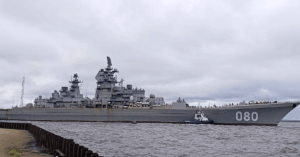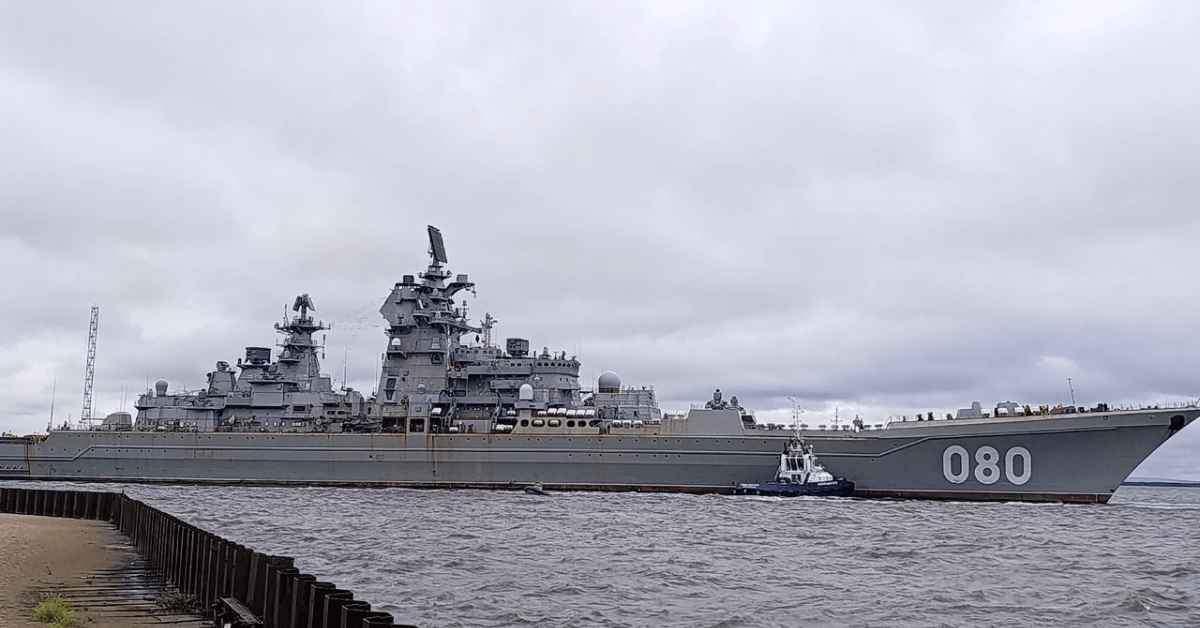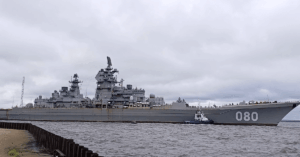
Ammonia & Methanol Declared Ready As Zero-Emission Shipping Fuels
August 20, 2025
IMO Announces 2025 World Maritime Day Theme: ‘Our Ocean, Our Obligation, Our Opportunity’
August 20, 2025

Russia’s heavy nuclear-powered missile cruiser Admiral Nakhimov has returned to sea for the first time since 1997, after decades of delays in its overhaul and modernisation.
The 28,000-ton battlecruiser, part of the Project 1144 Orlan (Kirov-class), was seen moving in the White Sea for factory sea trials, escorted by a tugboat. Videos and photos confirmed by Russian state media showed the vessel underway.
The cruiser’s two nuclear reactors were physically restarted in early 2025. The initial phase of trials will take place in the White Sea, followed by several months of testing in the Barents Sea, according to sources quoted by Russian news agency TASS.
Admiral Nakhimov was laid down in Leningrad in 1983, launched in 1986 under its original name Kalinin, and joined the Soviet Northern Fleet in 1988. In 1992, the ship was renamed in honor of Admiral Pavel Stepanovich Nakhimov.
The cruiser last went to sea in 1997, but due to Russia’s financial struggles in the 1990s, it was laid up in Severodvinsk at the Sevmash Shipyard. Although officially under repair since 1999, actual work did not begin until 2010, with the reactor defueled, and full-scale modernisation only started in 2013–2014.
Today, the Project 11442M Kirov-class heavy nuclear-powered missile cruiser Admiral Nakhimov after repair and modernization went to sea for factory sea trials.
Alekseeva/Aristovahttps://t.co/WS9nujMe60 pic.twitter.com/7j9PqKKvIe
— Massimo Frantarelli (@MrFrantarelli) August 18, 2025
Initially, completion was projected for 2018, but deadlines were repeatedly missed, first shifted to 2019, then to 2020, and later to 2021. Reports in 2021 suggested it would not return before 2023, and in 2022 the Sevmash yard moved the target to 2024. Now, in 2025, the long-delayed project has finally reached sea trials.
The entire modernisation effort is estimated to have cost around $5 billion.
The refit has given Admiral Nakhimov significantly greater striking power. The ship’s 20 outdated P-700 Granit missile launchers have been replaced with 80 universal UKSK 3S14 vertical launch systems, capable of firing Kalibr, Oniks, and Zircon missiles.
The cruiser is also fitted with new radar systems replacing Soviet-era models, and a new 130-mm AK-192M naval gun in place of the older AK-130.
Unconfirmed reports suggest additional upgrades could include Pantsir-M and Fort-M air defense systems, as well as Paket-NK and Otvet anti-submarine weapons. However, it remains uncertain whether all of these systems have been installed, as some may have been omitted to reduce costs.
Admiral Nakhimov, measuring 250 meters long and 26 meters wide, is one of the largest surface warships in the world. It displaces more than 24,000 tons and is powered by two nuclear reactors producing 150 megawatts each, supported by twin oil-fired boilers. This gives the cruiser a top speed of 32 knots.
In its original Cold War configuration, the vessel operated with a crew of about 700 officers and sailors. Reports suggest that despite Russia’s ongoing conflict with Ukraine, the Navy has managed to assemble a sufficient crew to take the ship through trials.
Admiral Nakhimov is the third of four Kirov-class nuclear-powered battlecruisers. Two of its sisters have already been decommissioned. The only other active ship of the class, Pyotr Velikiy, has not been modernised and is expected to be retired once Nakhimov is fully reactivated.
References: TWZ, TASS
Source: Maritime Shipping News



